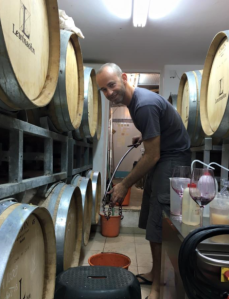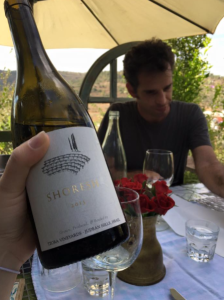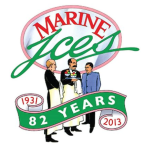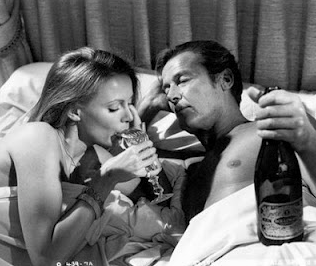 Israel may not be your obvious holiday destination but I found it one of the most fascinating and emotive places to visit. The reliable sunshine, long natural sandy beaches and warm Mediterranean Sea may sound like a holiday paradise but the land and its people are tension-ridden.
Israel may not be your obvious holiday destination but I found it one of the most fascinating and emotive places to visit. The reliable sunshine, long natural sandy beaches and warm Mediterranean Sea may sound like a holiday paradise but the land and its people are tension-ridden.
Easyjet now fly from London Luton to Tel Aviv directly so you can be dipping your flat bread into an authentic humus in just over 5 hours. But you had better save up as being a tourist here is an expensive game. In some places this is totally justifiable and worth it. Mahane Yehuda (twin restaurant of London-based Palomar) in Jerusalem is undoubtedly the best meal in Israel.
The best way to travel round is by car. The heat can be unbearable even as late as in October so air-conditioning is essential if you want to stay cool. There are few buses and a new metro network is being built in Tel Aviv but apart from that currently there is a noticeable lack of local transport. Everyone drives everywhere, like in America. And most drive scarily fast and furious, no kidding.
 A trip to Jerusalem is a must. The highlight for me were the Western Wall Tunnels whose 2,000-year-old stones have witnessed the Jewish people’s struggle, exile and birth as a new nation. This is the most important site for the Jews and others worldwide as it is the closest to the Holy of Hollies where the world & the first human Adam was created. Hundreds of Jewish men and women come to pray at the exposed outdoor part of the Western Wall. The intensity of the prayers and their devotion was an utterly moving experience.
A trip to Jerusalem is a must. The highlight for me were the Western Wall Tunnels whose 2,000-year-old stones have witnessed the Jewish people’s struggle, exile and birth as a new nation. This is the most important site for the Jews and others worldwide as it is the closest to the Holy of Hollies where the world & the first human Adam was created. Hundreds of Jewish men and women come to pray at the exposed outdoor part of the Western Wall. The intensity of the prayers and their devotion was an utterly moving experience.
As you continue, this captivating tour takes you through the stormy history of Jerusalem where each society fought for its life and future creating layer after layer of a religious significance. At the end, you have an option of exiting at the Via Dolorosa, the famous street where Jesus walked on to his crucification. Barely a stone thrown away, we found ourselves walking through the traditional Arab market, while being somewhat aggressively encouraged to part with our cash for small trinkets. There are three strongly rooted religions here that are constantly challenged by their extraordinary fragile coexistence.
 I guess the Dead Sea would be the next must place to visit for many but we only managed to drive past the shores while driving on the way to Masada. Mind you the thought of coaches-full of people coming to the sea to cure their eczema somewhat puts me off the whole floating experience. But it was a pretty unusual experience to see the altitude drop down below sea level as you drive towards the shoreline.
I guess the Dead Sea would be the next must place to visit for many but we only managed to drive past the shores while driving on the way to Masada. Mind you the thought of coaches-full of people coming to the sea to cure their eczema somewhat puts me off the whole floating experience. But it was a pretty unusual experience to see the altitude drop down below sea level as you drive towards the shoreline.
Being winey sorts, we also headed for Judean Hills and Galilee. Together with the Golan Heights these are the three most important vine-growing regions in Israel. The combination of a rather fertile thin topsoil of Terra Rossa with limestone bedrock and hot Mediterranean climate with low summer rainfall bring many challenges to making wine. On the other hand, thanks to the heat and dryness, the vineyards are relatively disease free apart from the noticeable spread of leaf-roll that so far has meant none of the vineyards have been made organic or biodynamic. Many international and a few Mediterranean grape varieties are planted but none have yet been established as Israel’s wine “signature”. Maybe the recent research into indigenous varieties may offer a direction and put Israeli wine on the world wine map.
 Domaine du Castel winery, established in 1990’s in Judean Hills as the first boutique winery with a focus on quality, is one of the most popular amongst the locals. Tasting through their selection, the appeal of heavily oaked character and blockbuster richness and extraction is obvious even if not everyone’s taste.
Domaine du Castel winery, established in 1990’s in Judean Hills as the first boutique winery with a focus on quality, is one of the most popular amongst the locals. Tasting through their selection, the appeal of heavily oaked character and blockbuster richness and extraction is obvious even if not everyone’s taste.
Virtually all medium to large wineries are kosher. This means that the winemakers are not allowed to touch grapes as soon as they are crushed. This however does not mean that the wines’ quality suffers. There are also few talented and entrepreneurial independent winemakers, such as my friend Ido Lewinsohn who is a winemaker for the famous Recanati but also makes his own wine Garage de Papa, literally in his dad’s garage. Despite the confined space, Ido’s wines are truly inspirational and magical.
Vineyards are usually situated far from their wineries, which brings many challenges in itself especially during the harvest. Planning rules class wine as an industrial product, so wineries are only permitted in industrial areas. One exception is Amphora, which has managed to establish a stunning stone walled winery along with a boutique visitor centre in Carmel region. Thanks to Michel Rolland’s influence here, the wines are amongst the most premium in Israel.
 When going out, the wines from Tzora, Sphera, Recanati, Flam, Shvo and Clos de Gat are all worth trying. Tel Aviv has its measure of trendy bars and lively nightlife. The Brut wine bar has a modest but impressive selection of local and international wines. For vibrant atmosphere head to Vicki Christina, a chic tapas wine bar located at The Station. And for people watching and a relaxing lunch, head to Kitchen Market located in the heart of Tel Aviv port.
When going out, the wines from Tzora, Sphera, Recanati, Flam, Shvo and Clos de Gat are all worth trying. Tel Aviv has its measure of trendy bars and lively nightlife. The Brut wine bar has a modest but impressive selection of local and international wines. For vibrant atmosphere head to Vicki Christina, a chic tapas wine bar located at The Station. And for people watching and a relaxing lunch, head to Kitchen Market located in the heart of Tel Aviv port.
Israel is a young country with a very long history. It is thanks to the ambition of the people here that this country thrives. At the same time, it is this ambition that brings the tension. Despite the many challenges that people face here, and no sign of a solution or the prospect of any tranquillity, I was glad to dip my toes here and to meet the wonderful Ido, Adi, Eran and their friends, even if so very briefly.






















